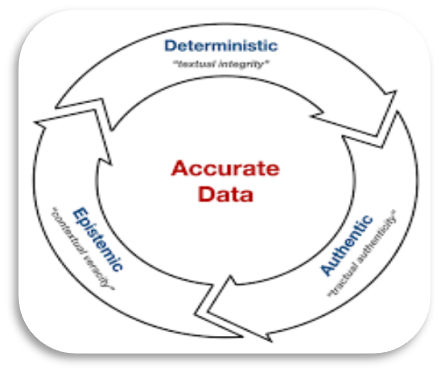Introduction:
With machine learning and AI being the standard today,
data is the foundation of any successful model.
However, big, quality datasets are not easily available because of privacy issues, lack of data, and the exorbitantly high cost involved. This is
where Generative AI steps in and changes the paradigm of enriching and augmenting datasets with data
augmentation.
Generative AI-based data augmenting techniques help in improving the accuracy of models, reducing bias, and creating more robust AI systems. We will illustrate, in this blog, the use of generative AI in data augmenting, its techniques, its applications, and its benefits.
What is Data Augmentation?
Data
augmentation is a method of artificially enlarging a data set by creating new
copies of existing data. Traditionally, this has entailed simple methods such
as:
Image augmentation: Rotation, cropping, flipping, or adding noise to images.
Text augmentation: Synonym replacement, back-translation, or sentence
paraphrasing.
Audio augmentation: Noise insertion, pitch shifting, or time-stretching.
But these older methods are of limited scope. They add nothing completely new but operate only with samples on hand. Generative AI does everything differently.
How Generative AI Enhances Data Augmentation?
Generative AI architectures like GANs (Generative Adversarial Networks), VAEs (Variational Autoencoders), and Transformers generate completely novel and realistic instances of data which are replicas of the original set of data. This assists with solving data deficiencies and enhancing generalization of models.
Generative AI Methods for Data Augmentation
1. GANs (Generative Adversarial Networks):
GANs
generate novel, high-quality artificial images, text, and audio
samples.
Example: GANs generate realistic
MRI scans in medical imaging to train deep learning models without
requiring additional patient data.
2. Variational Autoencoders (VAEs):
VAEs assist in creating smooth variations
of current data
points and are therefore helpful for structured data
augmentation.
Example: Constructing multimodal handwritten characters for training sets
in OCR.
3. Transformers and Large Language Models (LLMs):
LLMs such as GPT produce human-like language and are therefore suitable for
text-based augmentation.
Example: Generation of paraphrase text to enhance NLP model performance.
4. Diffusion Models:
Used in creating very realistic images
and sound by ongoing improvement of noise.
Example:
Generating artificial face images
for face recognition algorithms.
Uses of Generative AI in Data
Augmentation:
1. Computer Vision:
Synthesizing images for face recognition, medical
imaging, and autonomous driving.
Example: Autonomous car training simulated
car crash scenarios.
2. Natural Language Processing (NLP):
Supply text corpora used in sentiment analysis,
machine learning translation, and chatbot training.
Example: Augmenting low-resource language sets
with AI-authored text.
3. Speech and Audio Processing:
Creating artificial speech data sets to improve
automatic speech recognition (ASR) models.
Example: Developing different accents and
pronunciations for voice assistants.
4. Medical and Health Research:
Synthetic patient data generation for disease
prediction as well as drug discovery.
Example: Automated medical reports to train
predictive models without compromising confidentiality.
5. Cybersecurity and Fraud Detection:
Creating artificial instances of fraud to train better
fraud-detection algorithms.
Example: Creating diverse credit card fraud
transaction patterns.
Benefits of Generative AI in Data Augmentation:
✅ Reduces Data Sparsity –
Generates realistic synthetic data for low-resource domains.
✅ Enhances Model
Generalization – Machine learning models are less sensitive to variations.
✅ Enhances Privacy –
Enables training on synthetic data without exposing real user data.
✅ Cost-Effective – Reduces
the cost of manual collection and annotation of data.
✅ Eliminates Bias – Equalizes datasets by
producing samples that are underrepresented.
Challenges and Ethical Considerations:
While
Generative AI is full of promise, it is not without problems:
Data Authenticity: Providing assurance that synthetic data will not create
biases or inaccuracies.
Misuse Threats: AI-generated false information can be misused for fraud or
misinformation.
Computational Expenses: GANs or LLMs require massive computing capabilities for
training and data creation.
Conclusion:
Generative
AI is transforming data augmentation by generating diverse, high-quality, and
realistic data. While it is enhancing AI models and providing greater privacy
and fairness, its uses are numerous. With that said, careful implementation
must be ensured so that risks do not arise and ethical AI is developed.
As
AI keeps evolving, Generative AI-powered data augmentation will be at the
center of the future of machine learning.
Author Bios:
1. Mrs.S.Ambiga Priya,AP/AD
2. Mrs.V.Vidhya,AP/AD
3. Moniha
K, II Year/AD
4. Madhavan S, II Year/AD















Comments
Post a Comment